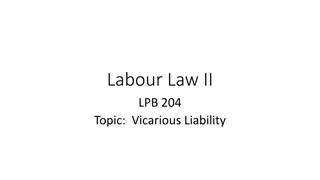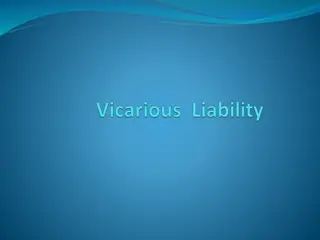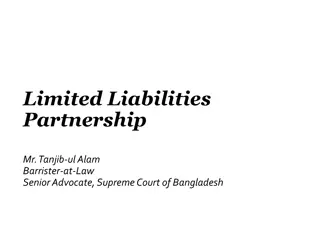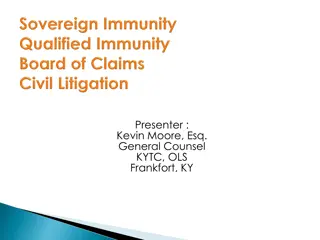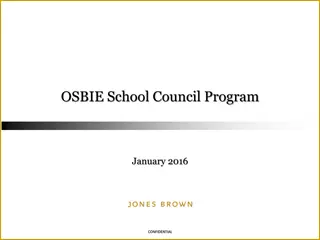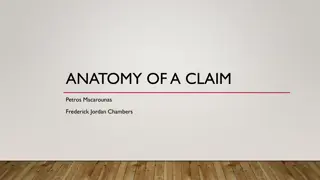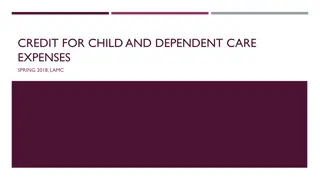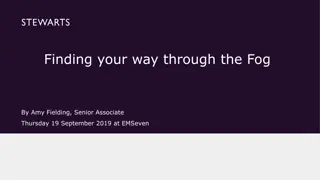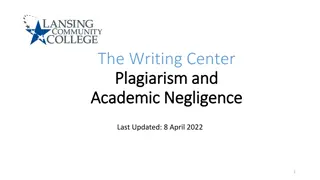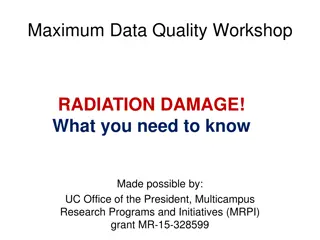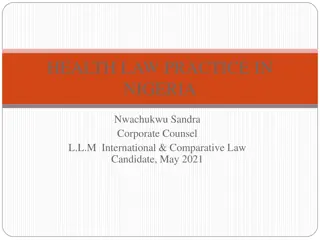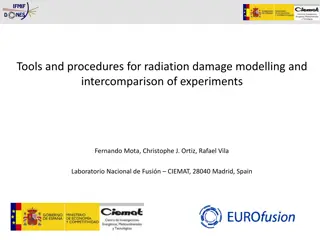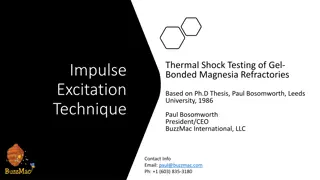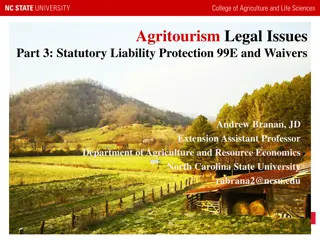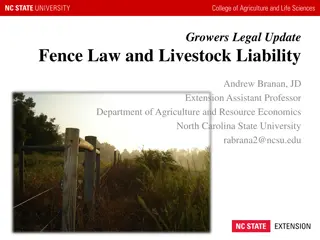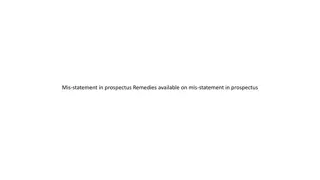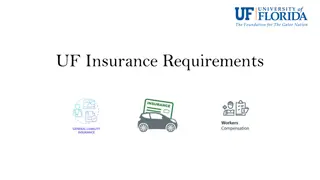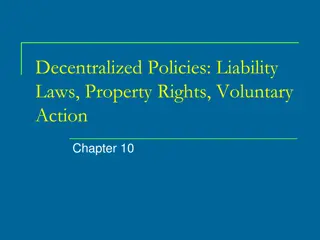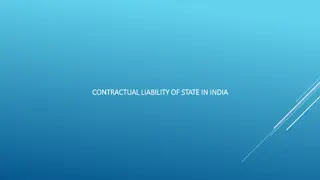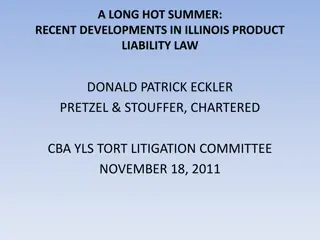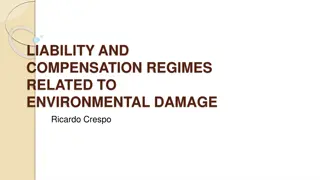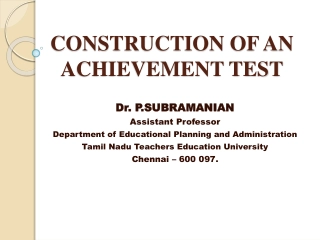Understanding Liability in Negligence: Tests for Remoteness of Damage
Explore the concept of legal causation in negligence cases with a focus on the tests for establishing remoteness of damage - Re Polemis & Furness, Withy & Co Ltd [1921] and Overseas Tankship (UK) Ltd v Mort's Dock and Engineering Co Ltd (Wagon Mound) (No. 1) [1961]. Discover the importance of reasonable foreseeability of damage in determining liability for negligent acts or omissions.
Download Presentation

Please find below an Image/Link to download the presentation.
The content on the website is provided AS IS for your information and personal use only. It may not be sold, licensed, or shared on other websites without obtaining consent from the author. Download presentation by click this link. If you encounter any issues during the download, it is possible that the publisher has removed the file from their server.
E N D
Presentation Transcript
Liability in negligence for injury to people and damage to property Negligence: Remoteness of damage
Learning Objectives By the end of the session you should be able to: 1. Explain the test for remoteness. 2. Explain the thin skull rule.
Remoteness In order to show legal causation, it must be shown that the loss or damage sustained by the claimant was not too remote. There are two key tests for establishing remoteness: Re Polemis & Furness, Withy & Co Ltd [1921] and Overseas Tankship (UK) Ltd v MortsDock and Engineering Co Ltd or (Wagon Mound) (No. 1) [1961].
Re Polemis & Furness, Withy & Co Ltd [1921] Facts: A ship s cargo hold had been filled with containers filled with petrol. The petrol produce vapour which exploded when a plank was negligently dropped into the hold causing a spark to ignite the vapour. Held: The Court of Appeal stated that the defendants were liable for all damage resulting from the negligence regardless of whether the type of damage was foreseeable or not. What mattered was that provided some damage was foreseeable, liability was owed for all direct consequences that could be directly traced to the negligent act or omission.
Overseas Tankship (UK) Ltd v Morts Dock and Engineering Co Ltd or (Wagon Mound) (No. 1) [1961]. Facts: A ship called the Wagon Mound was docked in harbour. The crew had carelessly allowed furnace oil to leak from their ship. The oil drifted under a wharf. Hot metal produced by welders on wharf fell on floating waste which ignited the oil on the water. The wharf and two ships sustained substantial fire damage. Held: The Judicial Committee of the Privy Council held that the correct test for remoteness is reasonable foreseeability of the type of damage caused. http://www.bailii.org/uk/cases/
The Two Tests for Remoteness The decisions in Re Polemis and Wagon Mound (No 1) conflict with one another. The Judicial Committee of the Privy Council in Wagon Mound (No 1) made it clear that they regarded the decision in Re Polemis as bad law. However, the precedent in Re Polemis has not yet been overruled. In practice today, all courts follow the test for remoteness established in Wagon Mound (No 1). This means that a claimant must show that the type of damage caused by the defendant s act or omission was reasonably foreseeable.
Citation In an examination you can abbreviate: Re Polemis& Furness, Withy & Co Ltd [1921]to Re Polemis. Overseas Tankship (UK) Ltd v Morts Dock and Engineering Co Ltd or (Wagon Mound) (No. 1) [1961] to Wagon Mound (No 1).* *Please note that it is important to add (No 1) in order to distinguish the case from another one involving Wagon Mound unconnected with the issue of remoteness.
Question Why do you think the Supreme Court has not yet overruled the precedent in Re Polemis?
Question Why do you think the Supreme Court has not yet overruled the precedent in Re Polemis? Answer:The Supreme Court can only overrule a precedent if someone chooses to appeal a case to it involving that precedent. The Court of Appeal itself tends to follow the precedent in Wagon Mound (No 1) rather than its own precedent in Re Polemis.
Remoteness in Psychiatric Injury Cases Foreseeability of injury is important in psychiatric injury cases. Please see the separate presentation on primary and secondary victims.
The Egg-shell Rule This is sometimes known as the thin skull rule or take your victim as you find him . If the type of injury is foreseeable but because of some pre-existing condition on the part of the defendant the extent of the injury is worse than would have usually been expected, the claimant is still liable for the full extent of the injury.
Smith v Leech Brain & Co Ltd [1962] Facts: Due to his employer s negligence, the claimant was splashed with molten metal on the lip. This burn caused cancer from which he died. The claimant had a predisposition to the cancer in his skin tissue. Held: The employer was liable for the claimant s death. Although the death might not have been foreseeable, an injury was. It was irrelevant that the claimant had the predisposition to cancer.



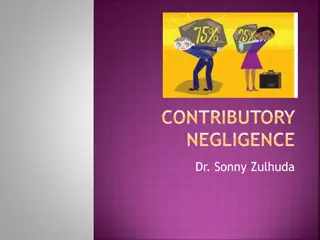
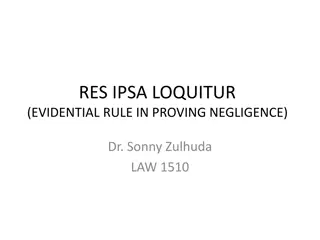
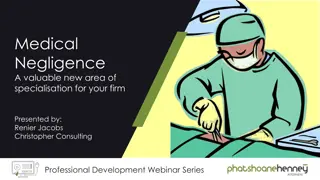
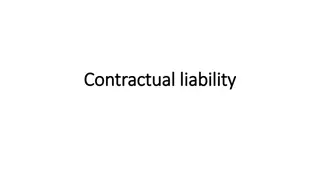
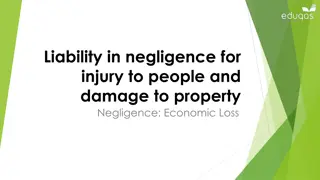
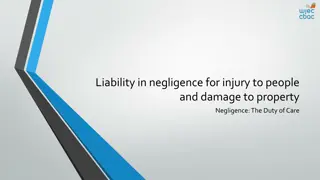
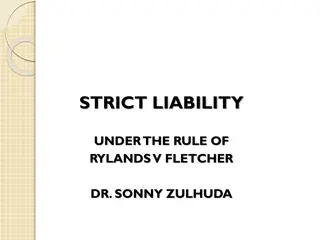
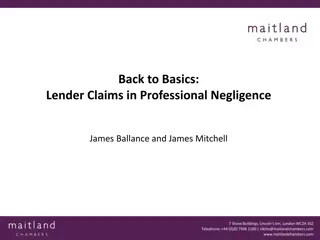
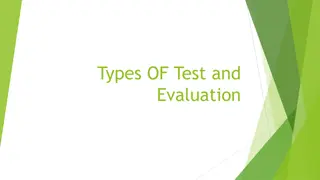
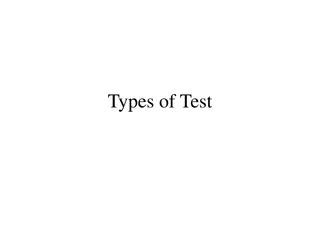
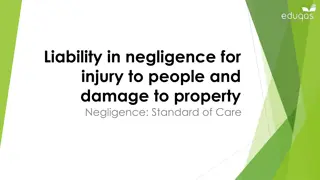

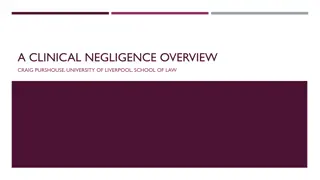
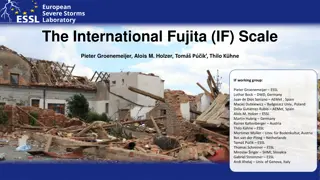
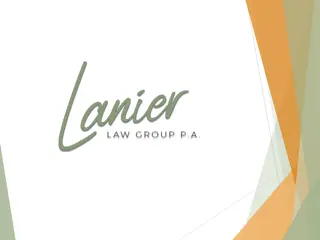

![Understanding Negligence Liability in Donoghue v. Stevenson [1932]](/thumb/198881/understanding-negligence-liability-in-donoghue-v-stevenson-1932.jpg)
